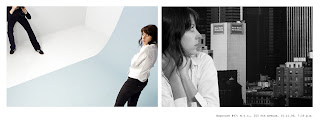Sorry I haven't been posting this semester. This post includes everything I have talked about this semester.
Artist: Siebren Versteeg
Gallery: Max Protetch, 511 West 22nd St.
Notes: His work is all about technology and the overwealth/overwhelming amount of visual information that we are forced to digest everyday. It is a subject that is relevant to everyone, especially technologically savvy young people (most of you are more savvy than me). Unfortunately his touch screens are out of our price range at $42,000. His video screens which are connected to flicker online and display images are $18,000 but the gallery is willing to negotiate with us and they are really nice. His large prints (95 x 42 inches) are more digestable at $10,500.
Examples:




Artist: Wim Delvoye
Gallery: Sperone Westwater, 415 West 13 St.
Notes: Belgian artist. All his art is amusing. He is most famous for a contraption he created with scientists that replicates the human digestive system and makes one "stool" a day. He has also tatooed pigs and made pictures that of what look like mosaics but are actually lunch meat. I am interested in his photgraphs of quick personal notes on large mountains. I think it makes you reconsider your own importance in such a vast landscape that we are in. How important those notes seem when we write them and how insignificant they look when chiseled intoa mountain is something all people can connect to. Did I mention they're funny? (still working on prices)
Examples:


Artist: Michael Scoggins
Gallery: Freight and Volume, 542 West 24th St.
Notes: He painstakingly recreated versions of his childhood notebook pages on a monumental scale. They are all about 170 x 129 inches, sure to make an impact by scale alone. They are all $10,000. Most of them are amusing and would be interesting to all types of college age students. Perhaps we could get one of the tests that he has graded (usually he doesn't do so well).
Examples:



Artist: Walead Beshty
Gallery: Wallspace, 619 West 27th St.
Notes: He believes that artistic production includes not just the artist but everone involved in making the product including critics. He makes sculptures out of color photopaper in a darkroom and exposes it to different light on in different parts of the sculpture and then unflods it. He also makes sculpture out of glass which he then sends via post mail and displays as they in whatever state they arrive. These works become modifed by circulation. I think both types are very interesting. I am still waiting on prices.
Examples:




Artist: Jane Hammond
Gallery: Galerie Lelong, 528 West 26th St.
Note: Composite of several found photgraphs online from anonymous photographers. She makes a negative from her photoshoped image and then prints in a darkroom. The result is a surreal other world. Her work comments on a number of issues including the illusion of photgraphy being reality, somputers and information, and the importance of context and juxtopositions in meaning, They are somewhat small at 11 x 14 inches but reasonably prced at $3,500.
Examples:



Artist: Steven Keene
Gallery: SKSK (his own store) 93 Guernsey St., Brooklyn
Notes: Has sold 170,000 paintings since 1991 for $3-$10 each. He makes each origional painting by hand. People order by quantity and he ships, you never know what your going to get. Can choose pieces in his store. Beleives art chould be as accessible as music and that each of his pieces are like a souvenier, parts of a whole. This would be a great way to portray art as accessible to the masses.
Examples:



































